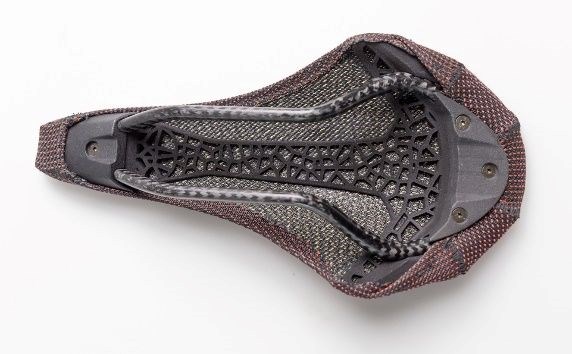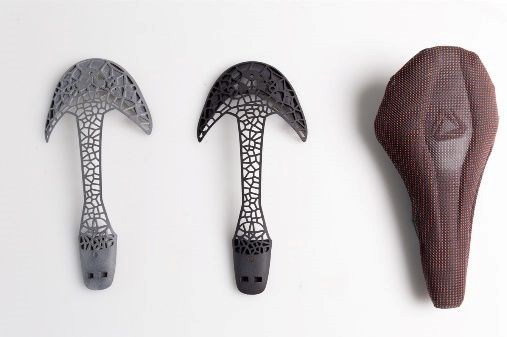Award-winning German design company DQBD GmbH is leveraging the Stratasys H350™ 3D printer to produce fully personalised cycling saddles that offer a higher level of comfort and performance efficiency compared to regular versions. DQBD is additively manufacturing several of the saddle’s load-bearing parts at scale, saving thousands in costs and cutting lead times from months to just several days compared to traditional molding methods.
DQBD has established itself as a strong design and development partner for many major global brands. The H350 3D printer, powered by SAF™ technology, provides the company with the design flexibility and production quality it needed to realize its vision of a completely customized cycling saddle. It also delivers high repeatability at production scale while driving time and cost efficiencies.
“We had always planned for AM to play a pivotal role in the creation of SAM - our cycling saddle,” says Sebastian Hess, CEO at DQBD. “In fact, we designed the saddle with additive manufacturing in mind. As well as delivering consistently accurate, production-grade parts at volume quickly and affordably, the technology offers a unique opportunity to personalize products in a way that cannot be replicated with traditional methods."
“When using the H350, we have seen cost savings across the entire product development process of up to £22,000 against those of injection moulding methods, as we are eliminating tooling costs completely,” explains Hess. “We have also shortened our lead times to around 10 days compared to the 3-6 months it can take with traditional manufacturing.”
Consisting of a semi-rigid, personalized 3D printed spine and a 3D thermoformed seat pad, the saddle is produced according to the individual rider's unique requirements. Software mapping of pressure points and weight distribution is used to match the geometry of the saddle with the rider’s body to create the perfect fit, while the composition of rigid and flexible zones of the saddle’s spine offer support and adaption precisely where needed. This unique combination offers more flex than other performance orientated saddles, translating to a higher level of comfort and less rider fatigue.
“We put the saddle through rigorous testing including impact strength, pressure, and fatigue resistance to ensure that it met industry standards and our own high expectations,” says Hess. “The PA11 material on the H350 was a great fit for the additively manufactured parts as it offers us high ductility, high impact and high fatigue resistance which was essential for our design.”
Sustainability was a key consideration in the design. The entire saddle assembly is glue-less, and at the end of the product’s life, components can easily be separated and reintroduced into production. The Stratasys High Yield PA11 material is a bio-based plastic made of a renewable raw material derived from sustainably grown castor oil.
“The consistency and high-quality precision of the H350 3D printer has made the idea of custom personalisation at scale a reality and allows us to take cycling to a new level,” Hess comments. “We can now create a saddle that maximizes performance on a per-rider scale while also enhancing comfort. Actually, the comfort that is provided renders padding in cycling shorts unnecessary, resulting in further weight reduction.”
Yann Rageul, Head of Manufacturing Business Unit EMEA & Asia at Stratasys adds: “We are seeing a definite trend in businesses’ readiness for volume production of end use parts. DQBD is showcasing how the H350 and its SAF technology can not only optimize the entire production process with valuable time and cost savings, but also shows the deployment of AM for truly unique and advanced designs – ready for production at scale. We are proud to see that the SAM saddle design DQBD created shows the advancements of additive manufacturing within the product development cycle – as the product concept was designed around AM from the start.”

